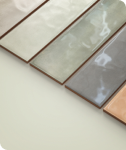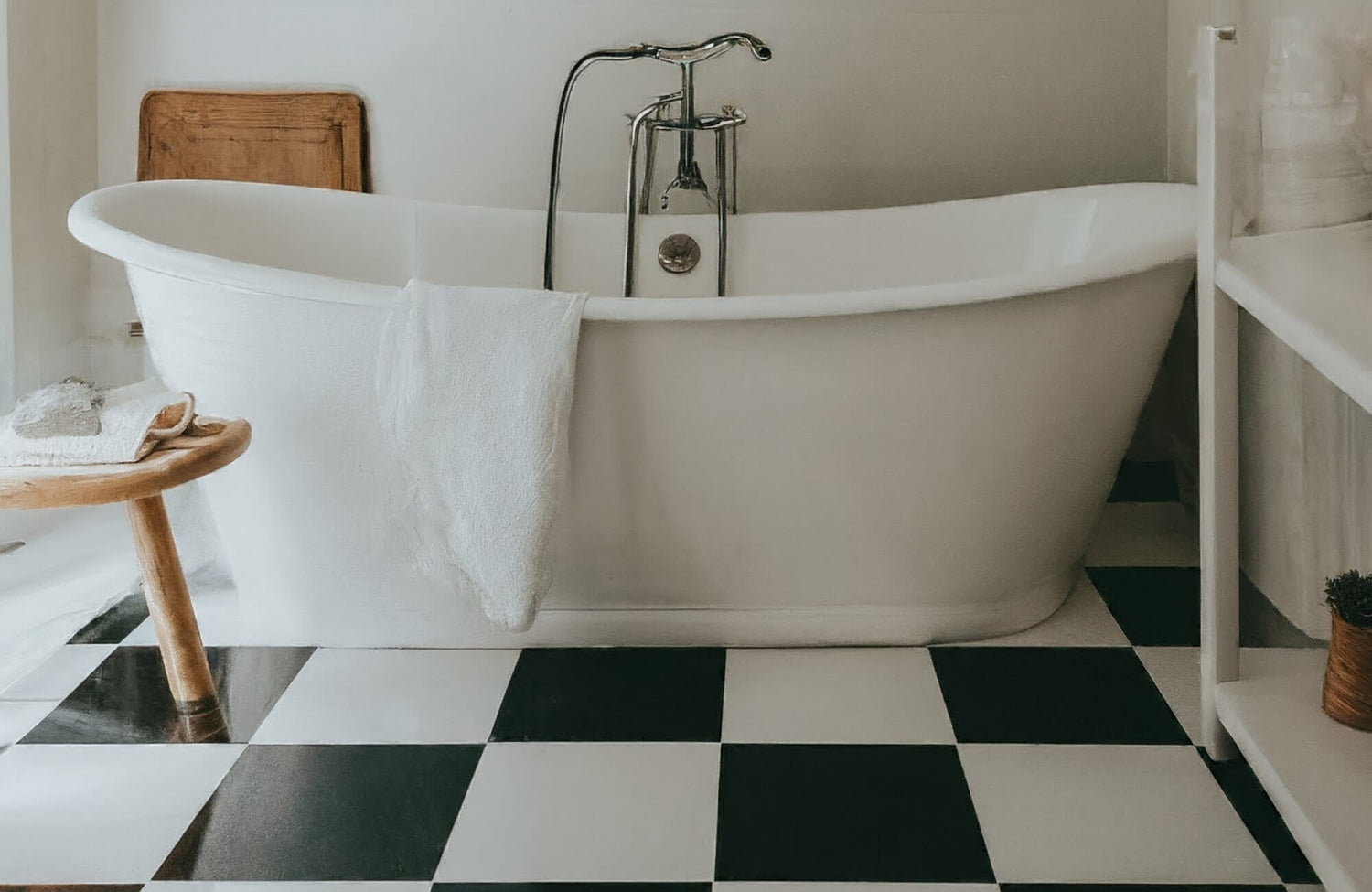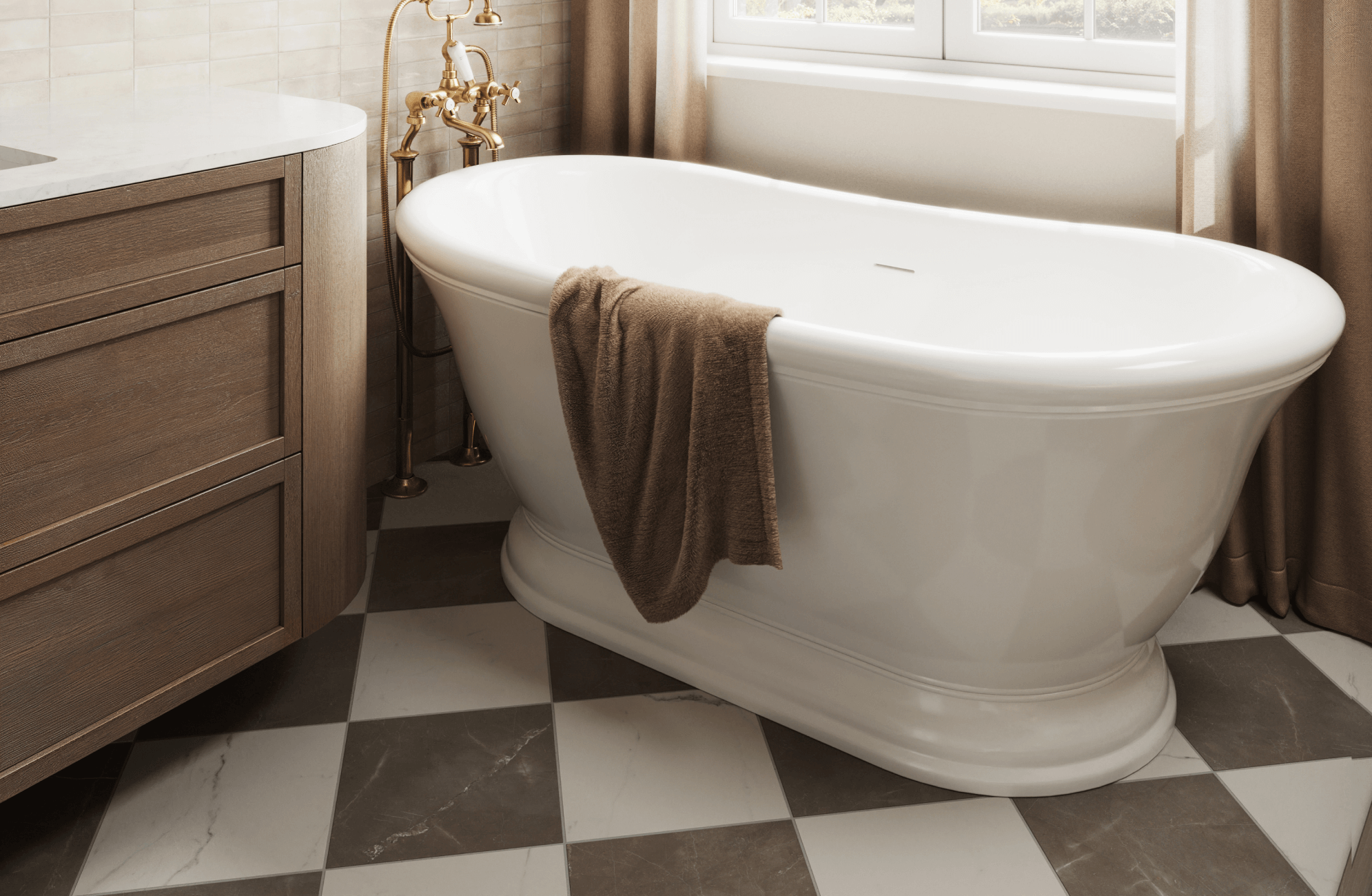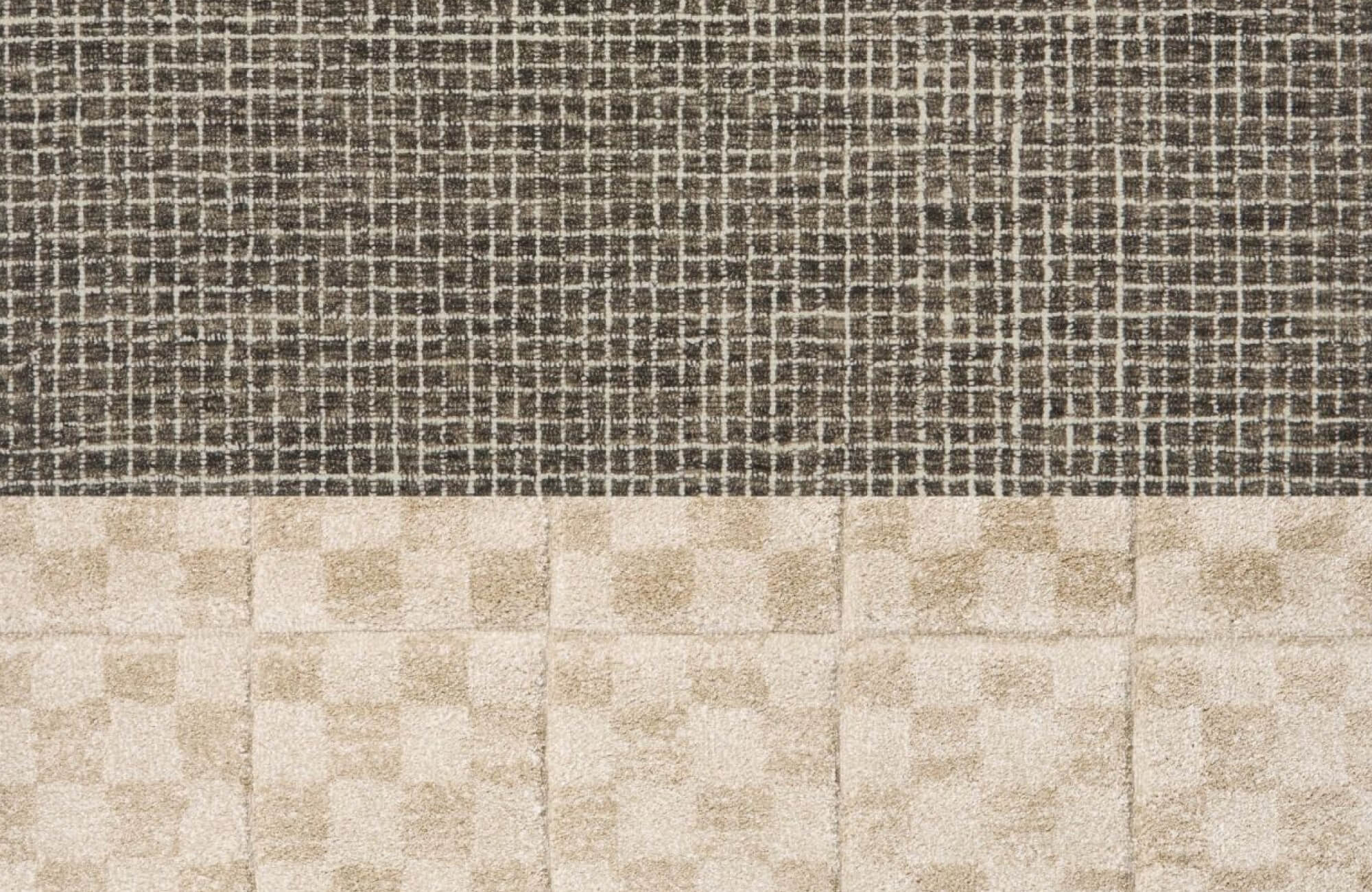Checkered tiles, celebrated for their bold geometric patterns and timeless versatility, can add striking depth, movement, and character to both classic and contemporary interiors. While they offer undeniable visual appeal, using them in bathrooms requires careful material selection and design balance to withstand high moisture levels and frequent cleaning.
In addition, choosing durable, water-resistant tiles and thoughtfully integrating checkered patterns ensures the bathroom remains both stylish and functional over time, maximizing their aesthetic impact without overwhelming the space. Factors such as tile material, finish, grout quality, and pattern scale all play a crucial role in achieving a successful installation. With proper planning and expert guidance, checkered tiles can transform a bathroom into a visually dynamic and enduring space.

Aesthetic Appeal and Design Considerations
Checkered tiles influence bathroom aesthetics through contrast, layout orientation, and material finish, offering a wide range of design possibilities. Their rhythmic pattern can establish a sense of structure, add dynamic energy, or soften spaces depending on how they are styled. In particular, traditional black-and-white checkerboards convey crisp formality, while muted color palettes introduce a more understated sophistication. Additionally, the choice between matte and glossy finishes impacts light reflection, while grout color can either sharpen or soften the visual lines between tiles, making it a critical factor in achieving the desired overall effect.
Layouts and Patterns
The arrangement and orientation of checkered tiles significantly shape the perception of space and the overall design aesthetic. For instance, straight-set layouts create a formal, structured appearance that emphasizes symmetry and order. In contrast, diagonal installations, rotated at 45 degrees, energize a room by drawing the eye outward and expanding the sense of space. Hexagonal checkered patterns introduce a contemporary twist, adding organic movement that softens rigid geometries. Curved layouts, achieved with waterjet-cut tiles or flexible mosaics, also lend fluidity to architectural contours, creating a more dynamic and flowing visual experience.
A striking example of a classic straight-set layout is displayed in the photo above with the Leona 12x12 Checkerboard Matte Porcelain Tile in Calacatta and Amani Grey. Featuring a sophisticated blend of soft white and muted grey tones with natural marble-like veining, this porcelain tile delivers timeless elegance while maintaining a relaxed, modern sensibility. The use of a traditional grid arrangement in the bathroom also highlights the clean contrast between tiles while creating a sense of order and calm, perfectly complementing large-format wall tiles and expansive windows for an open, airy feel. This layout demonstrates how material choice and tile positioning can harmoniously anchor a bathroom’s overall design.
Accent Features
Strategic placement of checkered tiles creates high-impact focal points that enhance bathroom architecture without overwhelming it. For example, limiting the checkerboard pattern to a shower niche, backsplash, or framed floor zone adds texture and energy while maintaining balance. Bordered fields on the floor or selective use on walls also anchor the room visually, while tonal color schemes soften bold contrasts for a more understated elegance.
Specific applications, such as framing a checkered floor inset beneath a freestanding tub or centering a checkered backsplash behind a vanity, further create strong visual anchors that define the room’s flow. Moreover, incorporating softer color variations, like muted grays or earth tones, within these focal areas enhances overall cohesion, allowing the bold geometry of the pattern to stand out while blending seamlessly with the surrounding elements.
Grout Color and Line Thickness
Grout selection plays a pivotal role in shaping the final appearance of checkered tile installations. High-contrast grout, such as dark grout with light tiles, sharpens the checkerboard effect and emphasizes each tile, creating a bold, graphic look ideal for contemporary spaces. Tone-on-tone grout, on the other hand, closely matched to one of the tile colors, softens the transitions and produces a more cohesive, expansive surface. In addition, grout line thickness further influences the visual outcome: narrow joints deliver a seamless, refined look, while wider joints introduce a more traditional or rustic texture that can feel busier if not balanced carefully.
When it comes to bathroom applications, using high-performance materials is especially important. Epoxy grout, for example, offers superior stain resistance, water repellency, and color longevity, outperforming traditional cementitious grout in moisture-rich environments. Combined with proper sealing and ongoing maintenance, the right grout choices ensure that checkered tile installations retain their precision, character, and durability over time, keeping the bathroom both stylish and functional.
To make the design process even easier, Edward Martin offers an innovative augmented reality (AR) tool that allows you to visualize tile options directly in your space. This technology helps you confidently explore patterns, colors, and layouts before making final decisions, ensuring that your selected checkered tiles complement your bathroom’s style, scale, and functionality perfectly.

Practicality and Durability
The durability and functionality of checkered tiles are critical for bathrooms, where surfaces must endure frequent moisture, temperature changes, and regular cleaning. In particular, porcelain tiles, with their low absorption rates and high compressive strength, outperform most ceramics in wet zones, making them an ideal material for checkered patterns. Additionally, slip resistance, as defined by Dynamic Coefficient of Friction (DCOF) standards, is an essential consideration, particularly for floors that may be exposed to water and soap residues.
Material Considerations
Material choice plays a crucial role in determining the performance, maintenance, and aesthetic quality of checkered tiles in a bathroom setting.
Porcelain Checkered Tiles
Porcelain checkered tiles are the top choice for bathrooms due to their extremely low water absorption rate (typically less than 0.5% per ANSI A137.1 standards), making them highly resistant to moisture intrusion, staining, and temperature fluctuations. Their dense, fine-grain composition not only enhances durability against impact and abrasion but also allows for precise cutting, resulting in rectified edges that enable tight grout joints for a clean, seamless checkered pattern.
A beautiful example is the Leona 12x12 Checkerboard Matte Porcelain Tile in Marfil and Amani Bronze, which features a warm, natural blend of soft beige and muted brown tones. In addition to its sophisticated appearance, Leona’s porcelain body provides outstanding resistance to water penetration, daily wear, and surface scratching, making it especially well-suited for active bathroom environments. In the bathroom photo shown above, these tiles are arranged in a traditional straight-set pattern, creating a refined, earthy backdrop that complements warm metallic fixtures, curved cabinetry, and neutral plaster walls. The result is a space that feels both grounded and luxurious, demonstrating not only the aesthetic elegance but also the superior technical performance that high-quality porcelain tiles like Leona consistently deliver.
Ceramic Checkered Tiles
Ceramic checkered tiles offer an affordable and versatile option for achieving checkered designs, particularly in wall applications or bathrooms with lighter daily use. While they possess a higher water absorption rate compared to porcelain, glazed ceramics provide a protective surface layer that resists stains and chemical damage. Their lightweight structure also facilitates easier handling and installation, making them suitable for accent walls, backsplashes, and wainscoting. However, ceramic tiles are generally more prone to chipping or surface wear in high-impact areas, so careful placement and sealing are recommended when used in floors or heavily used wet zones.
Selecting Suitable Tiles for High-Moisture Environments
Successful tile selection for bathrooms hinges on moisture resistance, proper installation, and material performance ratings. For instance, impervious tiles rated under ANSI A137.1 standards ensure minimal water absorption, offering critical protection against long-term moisture damage. In addition, slip-resistant surfaces that meet ANSI A326.3 thresholds enhance user safety, especially in wet environments. Applying waterproof membranes over substrates such as cement board further prevents moisture migration behind tile assemblies, while high-quality epoxy grout offers an added layer of protection against staining and water intrusion, ensuring the longevity and integrity of the installation.

Considerations for Small Bathrooms
The visual impact of checkered tiles in small bathrooms can either enhance or restrict the sense of space, depending on scale, color, and pattern orientation. Therefore, choosing appropriately scaled tiles and strategic layouts is essential to make even compact bathrooms feel more open and dynamic. In addition, lighter color palettes and minimalistic grout lines contribute to a cleaner, more expansive look, while optical techniques like diagonal layouts subtly manipulate spatial perception to the room’s advantage.
Creating the Illusion of Space
Strategically designed checkered layouts can significantly enhance the sense of space in small bathrooms. Light-colored tiles, for instance, reflect both natural and artificial light, helping to brighten the room and visually expand its footprint. In addition, arranging tiles diagonally guides the eye outward and across surfaces, subtly increasing the perceived dimensions of the space. Minimalist furnishings and floating vanities also play an important role by reducing visual clutter and allowing the checkered pattern to stand out without overwhelming the design. Furthermore, opting for matte or satin finishes instead of glossy surfaces softens reflections and contributes to a more open, airy atmosphere in compact settings.
Alternative Patterns and Sizes
Alternative checkered designs and scaled-down patterns offer effective solutions for small spaces without sacrificing style. Micro-check mosaics, for instance, introduce fine detail that complements rather than competes with limited room proportions. Similarly, tonal checkerboards featuring subtle color differences bring textural interest without harsh contrasts, creating a softer visual effect that works well in compact bathrooms. In addition, installing a single checkered accent wall provides impact without enclosing the space visually. Selecting smaller tile modules with subtle variation also offers greater flexibility in layout, helping the design adapt seamlessly to unique architectural features such as alcoves, sloped ceilings, or built-in shelving.

Incorporating Checkered Tiles with Other Elements
Achieving a harmonious bathroom design with checkered tiles requires careful coordination with surrounding materials, fixtures, and finishes. In particular, balancing bold tile patterns with subdued fixtures and complementary textures ensures the overall design remains cohesive rather than chaotic. Moreover, neutral plumbing finishes, sleek cabinetry, and natural materials provide essential grounding elements that allow checkered tiles to shine as dynamic focal points.
Showcasing Checkered Tiles as a Focal Point
Beyond materials and finishes, positioning checkered tiles as deliberate focal points turns them into artistic statements within a bathroom. For example, centered checkered floor fields beneath freestanding tubs, framed feature walls behind vanities, or tiled backsplashes with clean, defined borders direct attention without overwhelming the design. In addition, layered lighting, including ambient, task, and accent sources, enhances the dimensionality of the pattern while maintaining a cohesive and visually balanced atmosphere.
Playing with Color and Texture
Thoughtful color and texture combinations can elevate the visual impact of checkered tiles. For example, integrating natural wood accents, textured stone countertops, or soft woven textiles offsets the hardness of tile surfaces, creating a layered and inviting environment. In addition, choosing muted metallic hardware, such as brushed nickel or antiqued brass, further harmonizes with both high-contrast and tonal checkered patterns, enhancing the bathroom’s overall depth and character.

Potential Drawbacks and Alternatives
While checkered tiles offer striking design potential, there are also practical challenges to consider, including maintenance demands, alignment precision, and concerns about long-term trend resilience. In particular, the boldness of checkered patterns magnifies any installation inconsistencies, meaning that achieving a clean, balanced look requires exacting workmanship. Furthermore, grout lines can demand frequent cleaning, especially when light-colored or heavily contrasted with the tiles, which may lead some homeowners to explore alternative flooring and wall options that deliver a similar impact with less ongoing upkeep.
Alternative Flooring and Wall Tile Options
Several alternatives offer distinct visual and functional advantages for bathrooms beyond the classic checkered tile look.
Mosaic Tiles
Mosaic tiles introduce intricate patterning and texture, allowing for unique, customized designs that enrich bathroom surfaces. Options such as penny rounds, hexagons, or basketweave mosaics deliver dynamic visual interest without the high-contrast intensity of a checkerboard. A standout example is the Shea 12.5x15 Matte Porcelain Leaf Mosaic Tile in Warm Blend, which features a soft interplay of beige, off-white, and taupe tones in an elegant leaf-like pattern. As shown in the photo above, these Shea mosaic tiles create a refined and organic backdrop behind the vanity and shelving niches, seamlessly blending natural warmth with modern design. Its matte finish also enhances the tactile experience while providing excellent slip resistance and easy maintenance, making it an ideal choice for stylish, low-maintenance bathrooms.
Solid-Colored Tiles
Solid-colored tiles provide a clean, minimalist aesthetic ideal for creating serene and expansive bathroom environments. Larger solid tiles, particularly in neutral hues like soft gray, off-white, or beige, minimize grout lines and create seamless surfaces, while smaller formats offer more detailed design flexibility without overwhelming the space.
A refined example of a smaller format option is Edward Martin’s Jaxson 4x21 Glossy Ceramic Tile in Cloud, featuring a luminous white finish and an elegant elongated subway shape. Its glossy surface enhances light reflection, brightening compact bathrooms and adding a polished, sophisticated look ideal for accent walls, backsplashes, or full-height installations in both modern and transitional designs.
Natural Stone Tiles
Natural stone tiles, including marble, limestone, and travertine, lend bathrooms an unmatched sense of luxury and organic beauty. Each stone tile bears unique veining and tonal variations, creating bespoke surfaces rich in depth and character. While natural stone requires regular sealing and specialized cleaning to maintain performance in moisture-heavy environments, advancements in marble look porcelain alternatives offer the same sophisticated aesthetic with increased durability and lower upkeep.
Final Thoughts
Selecting checkered tiles for a bathroom demands thoughtful consideration of material performance, aesthetic goals, and maintenance expectations. When properly chosen and installed, they not only offer a timeless and dynamic visual element but also significantly elevate the overall bathroom design. Moreover, balancing bold graphic patterns with durable, moisture-resistant materials ensures that your investment remains both stylish and functional over time, ultimately creating a space that is visually captivating and built for longevity.
If you're considering checkered tiles for your bathroom, having expert guidance can help you bring your vision to life with confidence. At Edward Martin, our design services are here to support you in choosing the right materials, layouts, and finishes, so your bathroom feels both beautifully personal and built to last.







